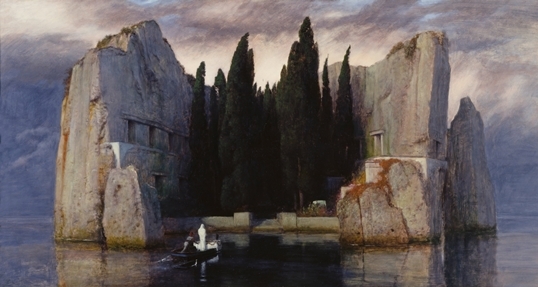
For some people, October 31st is celebrated as All Saints’ Eve, while for others the end of the month is the time of the spookiest holiday of the year – Halloween, a day full of strange costumes, walking dead-ish people and horror-like decorations.
Historically, this day, originally intended for remembrance of the departed ancestors, has been accompanied by traditional ‘theme’ music taken from classical and religious works. No Halloween passes without listening to such well-known pieces as “Danse Macabre” by Saint-Saëns, or “Ride of the Valkyries” by Wagner, or Grieg’s “In the Hall of the Mountain King”. For one reason or another, these pieces are able to create that special ambiance that would cause mystical and dark associations for many people, making them envision the dance of death, or imagine the flight with Valkyries or visit the Mountain King’s cave in their mind.
We present to you a shortlist of some more and less popular but all truly creepy classical compositions. You can add your suggestions in the comment section below!
1. S. Rachmaninoff, “Isle of the Dead”
In 1907 Sergei Rachmaninoff visited Paris and saw a painting by the Swiss symbolist Arnold Böcklin. It was a black-and-white reproduction of his “Isle of the Dead” that inspired the Russian composer for writing a symphonic poem in A Minor. The mystic work was concluded in 1908 and became a vivid example of Russian Romanticism of the early 20th century. However, after seeing the original work in color, Rachmaninoff said he was very disappointed and probably would not have written the poem. Luckily, he did see the B&W version first.

Image: Arnold Böcklin, “Isle of the Dead”
2. I. Stravinsky, “The Sacrifice”
The second part of Stravinsky’s scandalous ballet “The Rite of Spring” is full of barbaric and brutal rhythms able to totally stir up one’s inner self and strike you with its startling and chaotic percussion. In fact, the entire ballet was initially meant to be titled ‘The Great Sacrifice’ and you can’t but feel the meaning of this heavy word in every single passage.
3. A. Caplet, “The Mask of Death”
Harp is not really associated with something creepy, is it. Nevertheless, André Caplet made it sound so in a combination with a string quartet. The inspiration behind this work is Edgar Poe’s popular story about the devastating plague – “Masque of the Red Death”. As a result, we have an extraordinary piece of ‘elegant horror’, soft and frightening at the same time.
4. M. Mussorgsky, “Night On Bald Mountain”
What happens on the Bald Mountain doesn’t stay on the Bald Mountain but comes to our knowledge in form of an ominous “musical painting’ skillfully drawn by Mussorgsky. Aiming to create something mystical and depicting the fears of the peasant people, composer set to music his vision of the witches’ sabbath, filling the tone poem with screams, howling and all the nasty stuff that the evil spirits could be possibly producing during the annual meeting.
5. F. Liszt, “Mephisto Waltz No.1”
The agony that accompanies the first part of the waltz makes it one of the most dramatic and overwhelming piano pieces that sounds equally creepy with and without the orchestra. A beautiful passionate sample of program music generating so much drama.
6. B. Bartók, “Music for Strings, Percussion and Celesta”
Let’s focus on the adagio here. That xylophone… it can make anyone nervous. Another instrument that is humble and innocent out of context but sounds unexplainably creepy when combined with some gentle strings and occasional but persistent percussion. That could work as a perfect Halloween background music if you are in need of adding some decent tension to the holiday.
Video: Adagio from Bartók’s “Music for Strings, Percussion and Celesta”
7. H. Berlioz, “Dream of Witches’ Sabbath”
More witches! More sabbath! Berlioz dwelt on the topic too and he did it in his own spine-chilling manner. Conductor Bernstein called the work an expedition to the psychedelia due to its hallucinatory nature. So many evilish audio effects are to be found nowhere else, perhaps. That’s where you can emerge into the world of strange groans, distant screams, hysterical laughter, diabolical dances and somber bubbling.
8. P. Dukas, “Sorcerer’s Apprentice”
Be aware that every time you gonna play it at home, the brooms are highly likely to get out of control and start flying. The Creepy in this music work is rather of Disney nature, it’s a big contrast to, say, the previous composition by Berlioz, for example, a much kinder fairy-tale type of evil that we be greatly enjoyed by the kids.
9. S. Prokofiev, “Dance of the Knights”
Nothing can warn you better about something big and scary coming than Prokofiev’s famous orchestral suite “Montagues and Capulets”. The two clans at war meet each and the encounter becomes fateful for the young Romeo and Juliette. Knowing a huge spoiler from Shakespeare’s drama, you simply can’t listen to this menacing beginning indifferently.
10. C. Orff, “O Fortuna”
If this is not the audio quintessence of evil than we don’t know what is. The despair, impending doom and fatality are the minimal set of emotions to invade you from the first notes, while the choir keeps adding more drama. This perfect crescendo is a ready-made soundtrack to any cataclysm.
Video: “O, Fortuna”, C. Orff
You can search up the sheet music to these works (full scores and parts) in our sheet music catalogue and play them yourself during the holiday time.